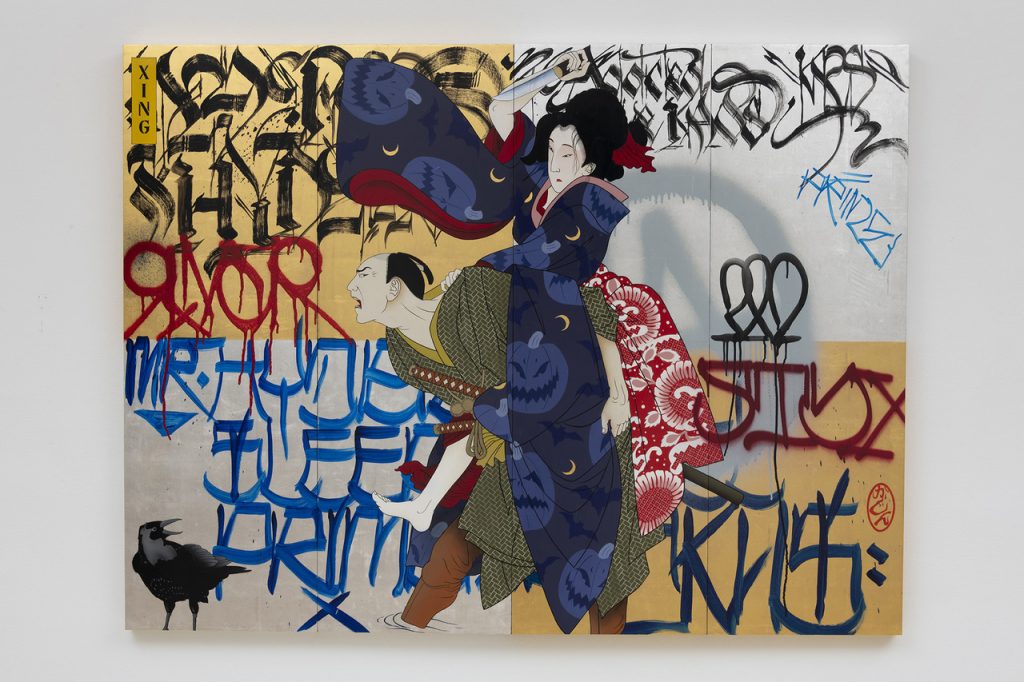
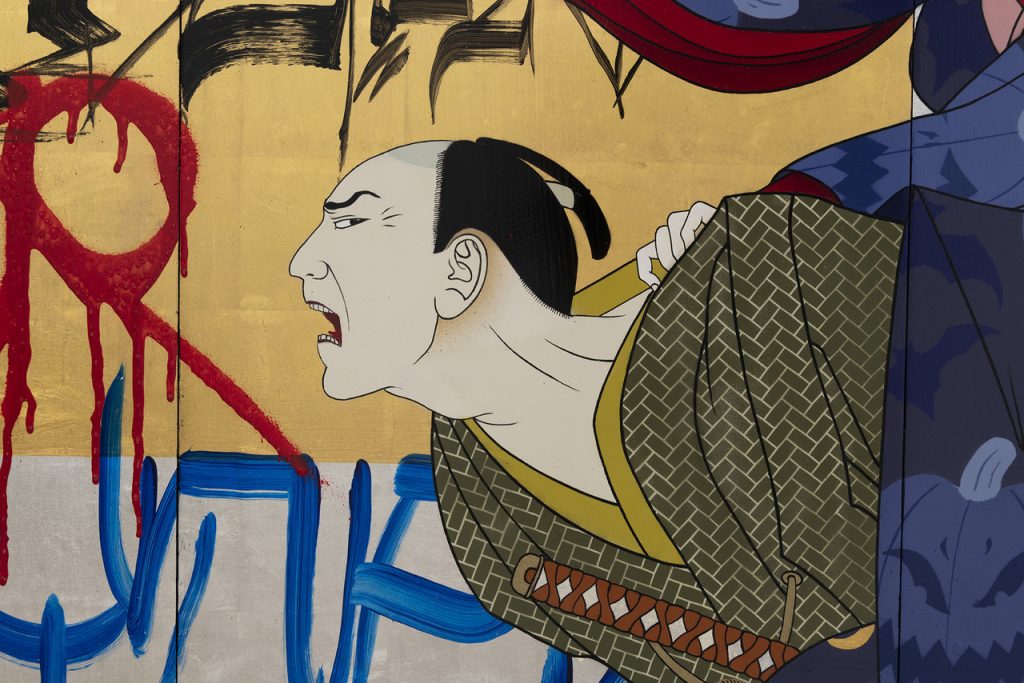
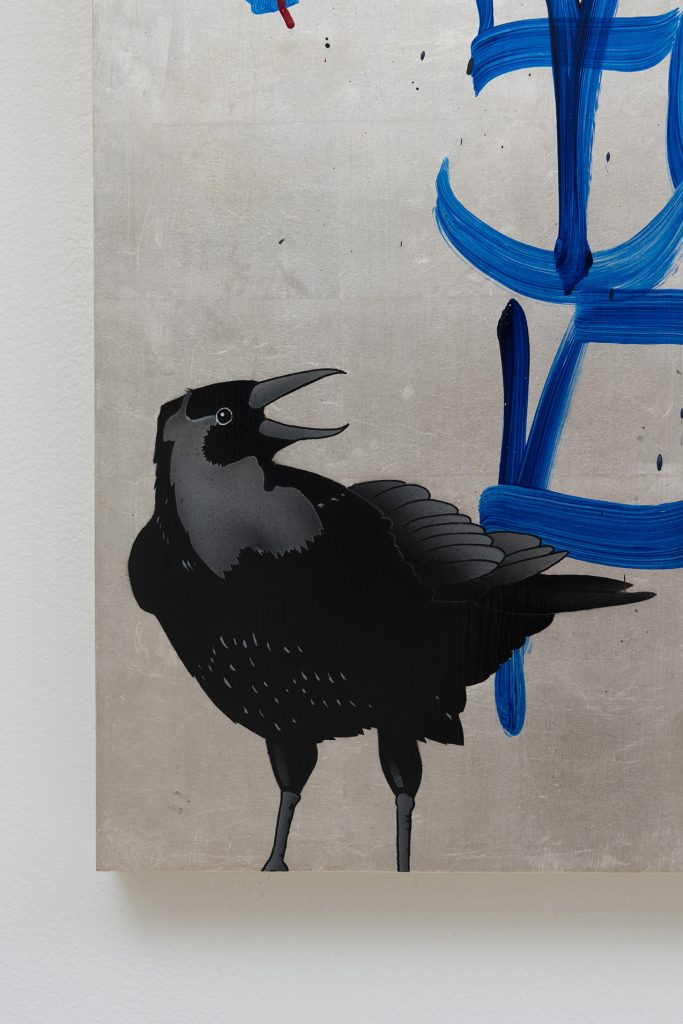
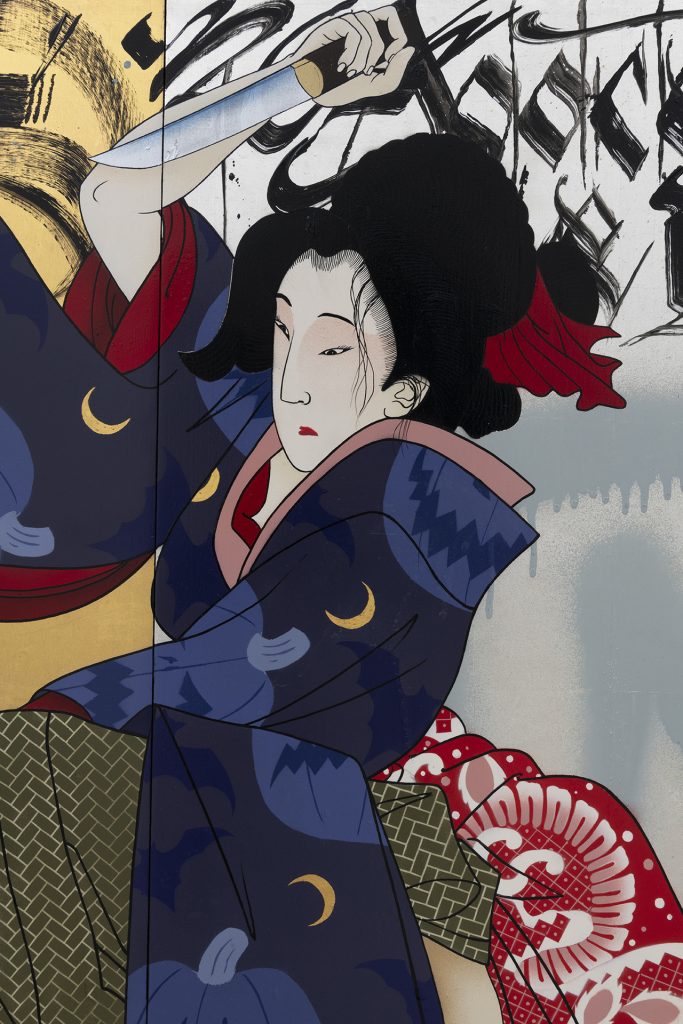
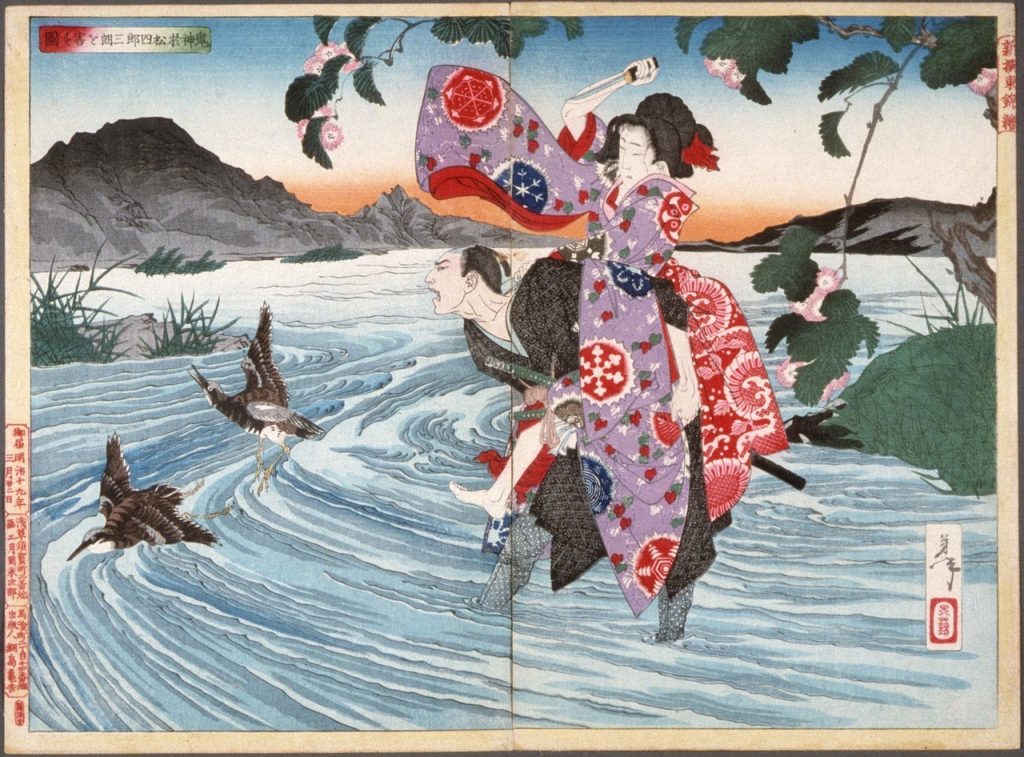
In his new work “Xing the River Styx” (2018), Gajin Fujita makes reference to a woodblock print by Tsukioka Yoshitoshi (1839-1892) titled “Kishin Omatsu Shirosaburo o Korosu Zu” or “Picture of the Demon Omatsu Killing Shirosaburo.” The work dates back to 1886 and depicts the 14th-century legend of samurai Shirosaburo at his moment of death. According to folklore, the woman responsible for his killing was a ghost of his deceased wife. It is believed that she was murdered by the samurai, and here she reemerges to seek revenge. Posed as a maiden needing assistance across the river, she manages to lure the samurai to carry her to the other side. Fujita has long admired the work of Yoshitoshi for his realistic depictions of people with emotive qualities of expression. The tension in this scene is palpable. While adhering to Yoshitoshi’s exact figural composition, Fujita removes the characters and supplants them into his own picture plane. On wooden panels, finished with white and gold leaf, they float amongst graffiti-style markings written by himself and longtime friends and members of his graffiti crew K2S (Kill 2 Succeed), Defer, Prime and 382.
The garment patterns are either slightly altered from the original, or completely rehashed. The red sunflower textile that trails behind the female figure is true to Yoshitoshi’s composition, but which Fujita graphically enhances with sharper forms and deeper contrasts. However, her blue kimono is completely derived from his own imagination. To characterize her as a ghostly apparition, Fujita drapes her in Halloween motifs that connote trickery, witchcraft and the supernatural. Because all color is applied with spray paint through cut-out stencils, patterns can often pose a challenge in the artist’s process. For the Halloween pattern, the artist created two stencils for the pumpkins and two for the bats. By alternating the stencils, he multiplied the imagery across her clothing, while paying special attention to the creases and folds. Executed in an indigo palette of blues, the artist makes reference to traditional Japanese shibori textiles. In the male’s garments, Fujita adheres closer to the original with a traditional woven-like Japanese pattern, but in a different color palette of greens and golds. To achieve a seamless repetitive pattern, Fujita designed a specialized vinyl stencil of a small section of the pattern. Through repeated application, he strategically executed the overall design, carefully comporting to the clothing’s drapes and folds.
The crow in the lower left-hand corner is a Fujita addition, placed as a portent of the scene at play.
While the work’s title “Xing the River Styx” makes reference to Greek mythology, Fujita was also inspired by the ’70s cult classic samurai film series “Lone Wolf and Cub,” particularly the second in the series titled “Baby Cart at the River Styx.”
IMAGE: (top) Gajin Fujita, Xing the River Styx, 2018, spray paint, paint markers, 12k white gold and 24k gold on four wood panels, 48 x 64 in. (121.9 x 162.6 cm); (bottom) Tsukioka Yoshitoshi (1839-1892), Kishin Omatsu Shirosaburo o Korosu Zu or Picture of the Demon Omatsu Killing Shirosaburo, 1886
